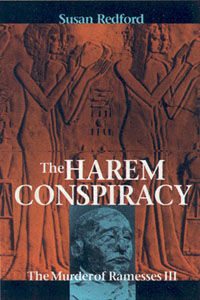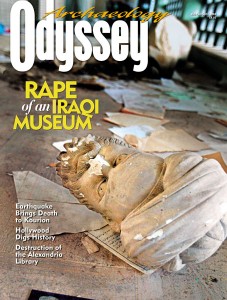
The Harem Conspiracy: The Murder of Ramesses III
Susan Redford (Dekalb: Northern Illinois University, 2002) 202 pp., $32
The rulers of the ancient world are not known for their modesty. Take for example, the Egyptian pharaoh Ramesses III (1182–1151 B.C.). Throughout his 31-year reign, Ramesses began most of his speeches with statements like “All my plans succeed” or “I am never wrong.” He also built himself a magnificent mortuary temple and adorned its walls with gigantic images of his military triumphs. After his death, Ramesses’ heirs even buried him with the world’s longest papyrus (the 133-foot-long Great Harris Papyrus, now in the British Museum), which painstakingly chronicles all of the “great king’s” spectacular military achievements and acts of royal largesse.
Thanks in large part to such lavish acts of self-promotion, Ramesses III is remembered today as “the last of the great pharaohs.” Most textbooks on ancient Egypt feature admiring descriptions of his temple at Medinet Habu and heroic accounts of his victories over the Libyans and “Peoples of the Sea.” There is, however, one important aspect of Ramesses’ life that remains obscure: his death.
Already a library member? Log in here.
Institution user? Log in with your IP address.

